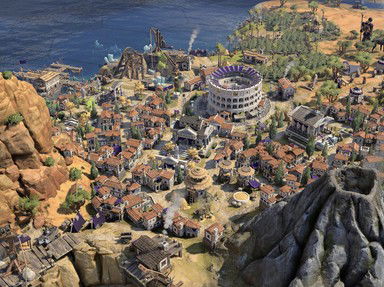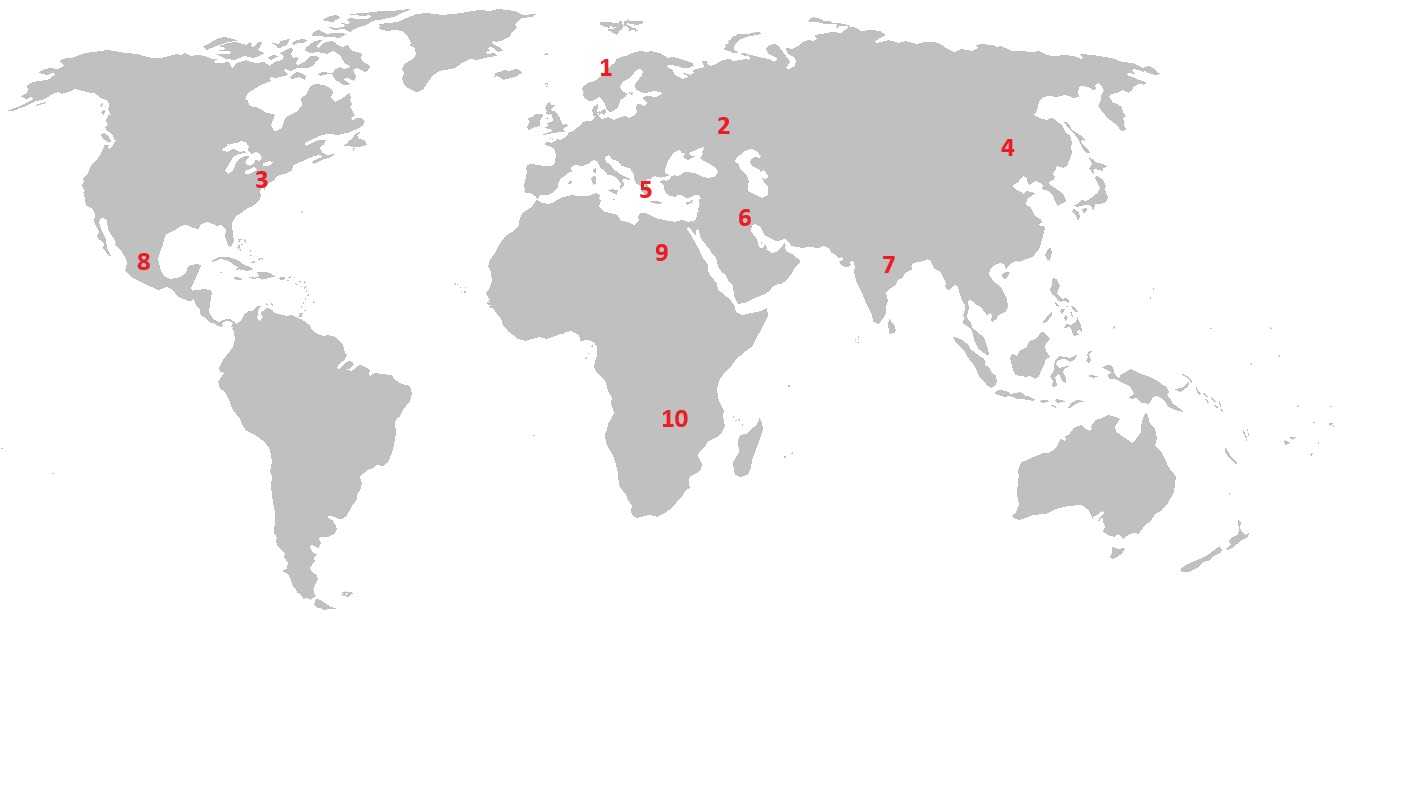
Capital Cities in "Civilization VI" Quiz
Can you pinpoint the Capital Cities of ten Civilizations (playable empires) in "Civilization VI" on the map used for "True Start Earth"? Interesting info about their leaders is included. The game is available on multiple platforms.
A label quiz
by JanIQ.
Estimated time: 3 mins.
